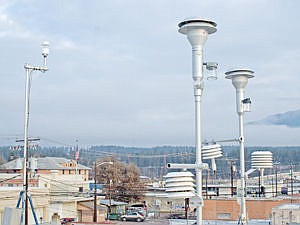EPA air quality comparisons fail to consider Libby Amphibole asbestos
When the Environmental Protection Agency compares the air in Libby to other cities in Montana and around the nation, one thing is missing: Libby Amphibole asbestos.
“EPA doesn’t monitor Libby Amphibole asbestos under the Clean Air Act. It is not a criteria pollutant, so there’s no national monitoring program,” said Lisa McClain-Vanderpool, Public Affairs Specialist for the agency.
That means the comparison of Libby’s air to other cities has absolutely nothing to do with the level of Libby Amphibole asbestos in the air. While asbestos, in general, is specifically monitored in some cities, due to contamination issues, it is not part of the nationwide air-monitoring program.
While Libby Amphibole asbestos was used in products shipped around the world, at no other city in the U.S. was the air so heavily infested with this particular asbestos fiber. For years Libby Amphibole asbestos was mined, milled, stored, processed and used in this city. It was in clothing, yards, road materials, gardens, flowerbeds, baseball fields and virtually everything in and around Libby.
When comparing the air in Libby to that of other cities, a different standard is used. That standard, set by the EPA, is PM2.5, which measures particulate matter.
Kendra Lind, of the Lincoln County environmental health office, explained the standard. “PM2.5 means monitoring for particulate matter in the air with a diameter of less than 2.5 micrometers. Particulates that small are easy for a person to breathe in, but difficult for the body to process.”
While the various particulates differ from region to region, the standard of measurement makes it easier to compare relative air quality around the nation. In Libby, for instance, the main particulate contaminants come from wood smoke as well as automobile emissions. In other cities the leading contaminants could be similar or could also be industrial or chemical in nature.
Atop Libby’s Courthouse Annex building on Mineral Avenue sit several pieces of air monitoring equipment. That equipment takes air samples and pushes them to analysis equipment inside the building where the samples are analyzed and reported on a continuous basis.
Those reports are sent to the Montana Department of Environmental Quality and to the Environmental Protection Agency, which analyze the data, validate the results and report on the air quality of cities across the nation.
Libby’s weighted mean ambient air PM2.5 concentration was 10.9 for 2013, meaning that average daily exposure to fine particulates was 10.9 micrograms per cubic meter of air.
According to EPA data, the U.S. city with the highest PM2.5 concentration in 2013 was Fresno, Calif., with a weighted mean of 34.9, more than three times higher than that of Libby.
Libby’s weighted mean was higher than any other reporting city in Montana, but not by much. Butte had a weighted mean of 10.4, Missoula reported 9.8, with Kalispell and Helena at 8.5 and 7.4, respectively. The national target for PM2.5 exposure, the level of air considered safe by EPA standards, was set in December 2012 at 12 micrograms per cubic meter.







